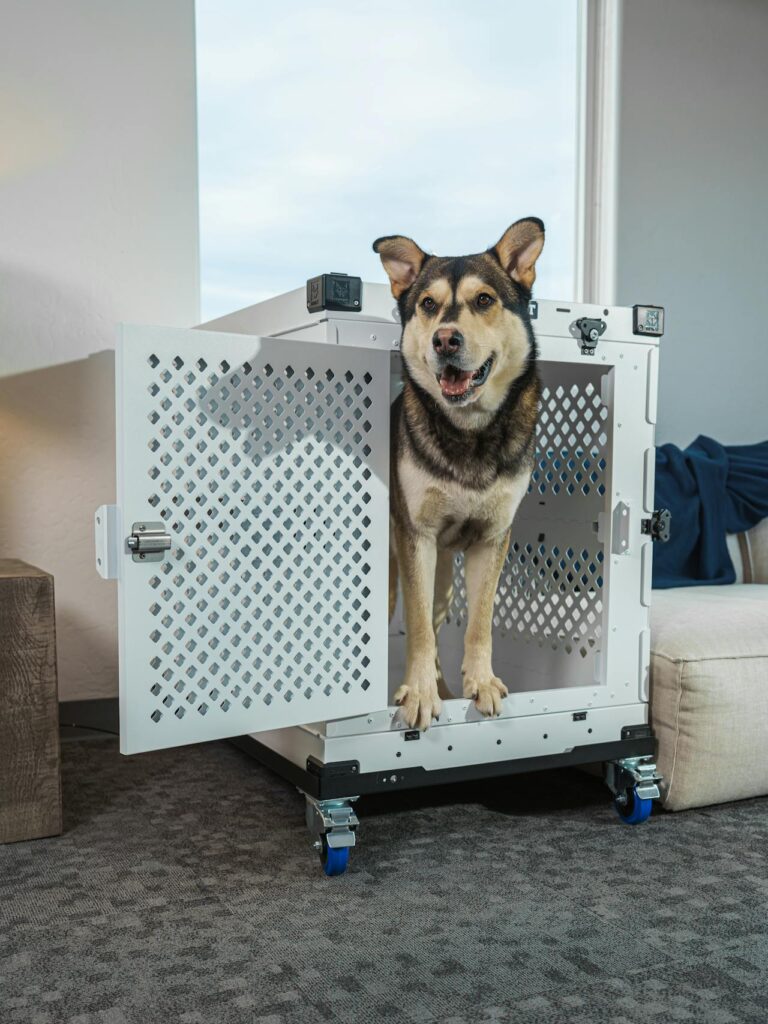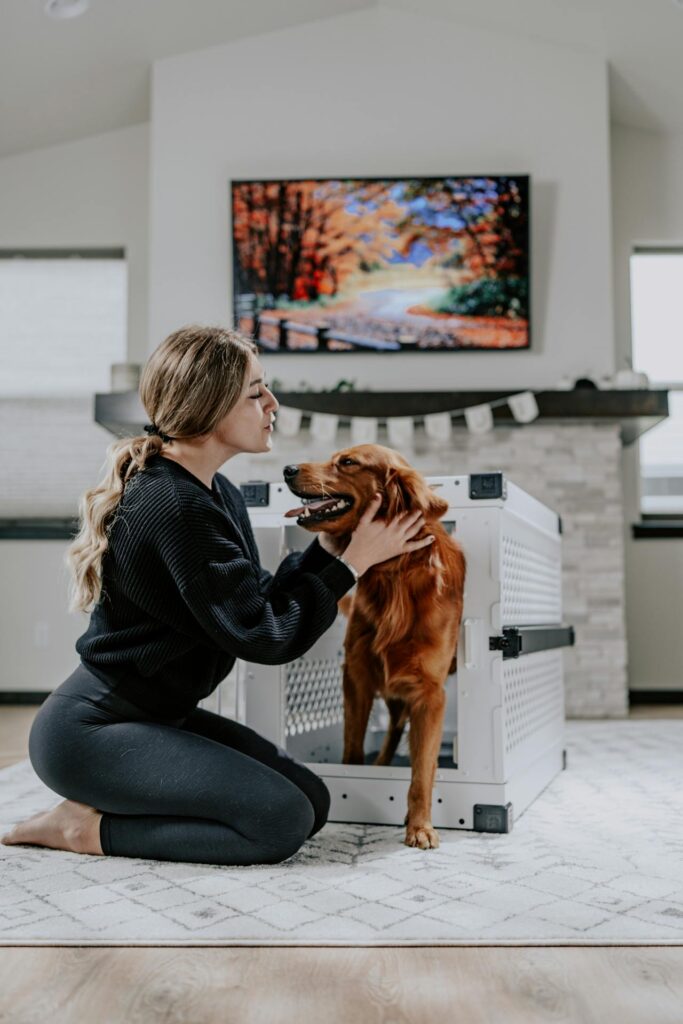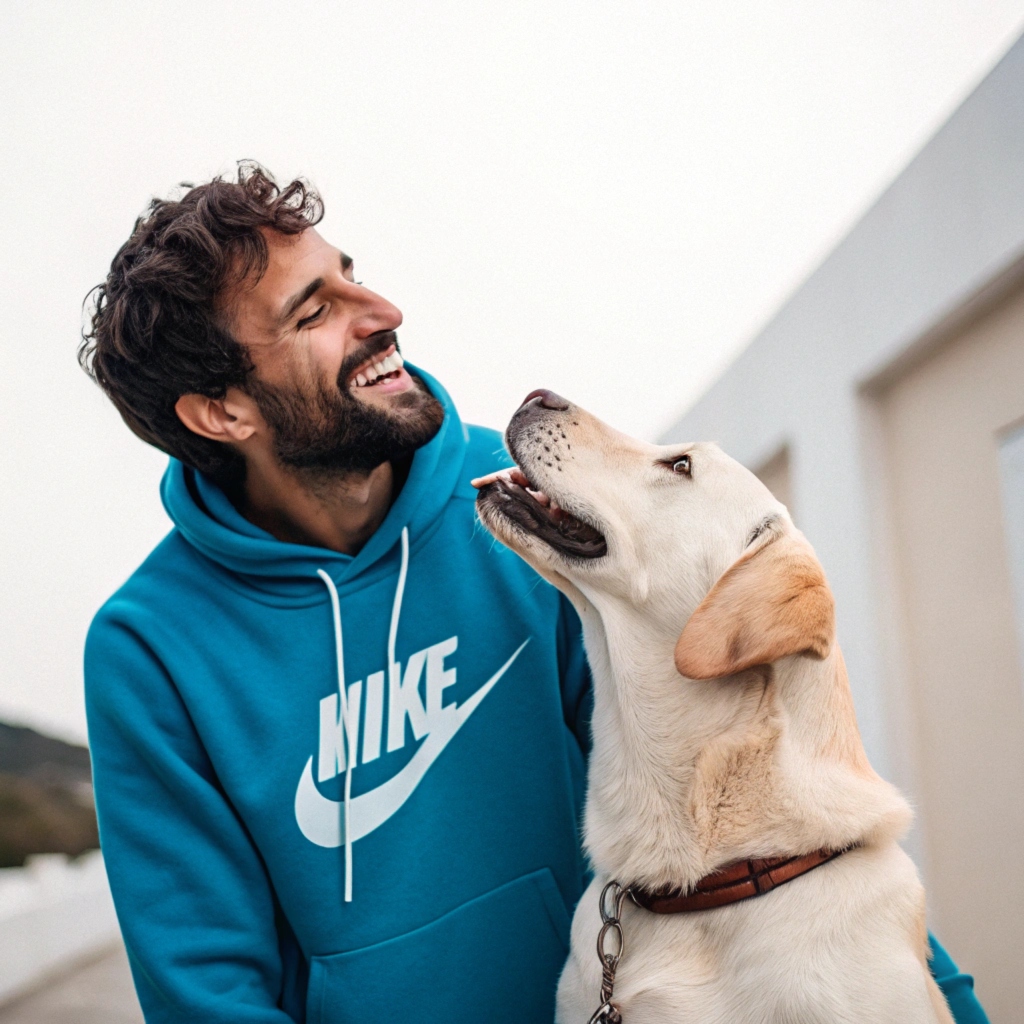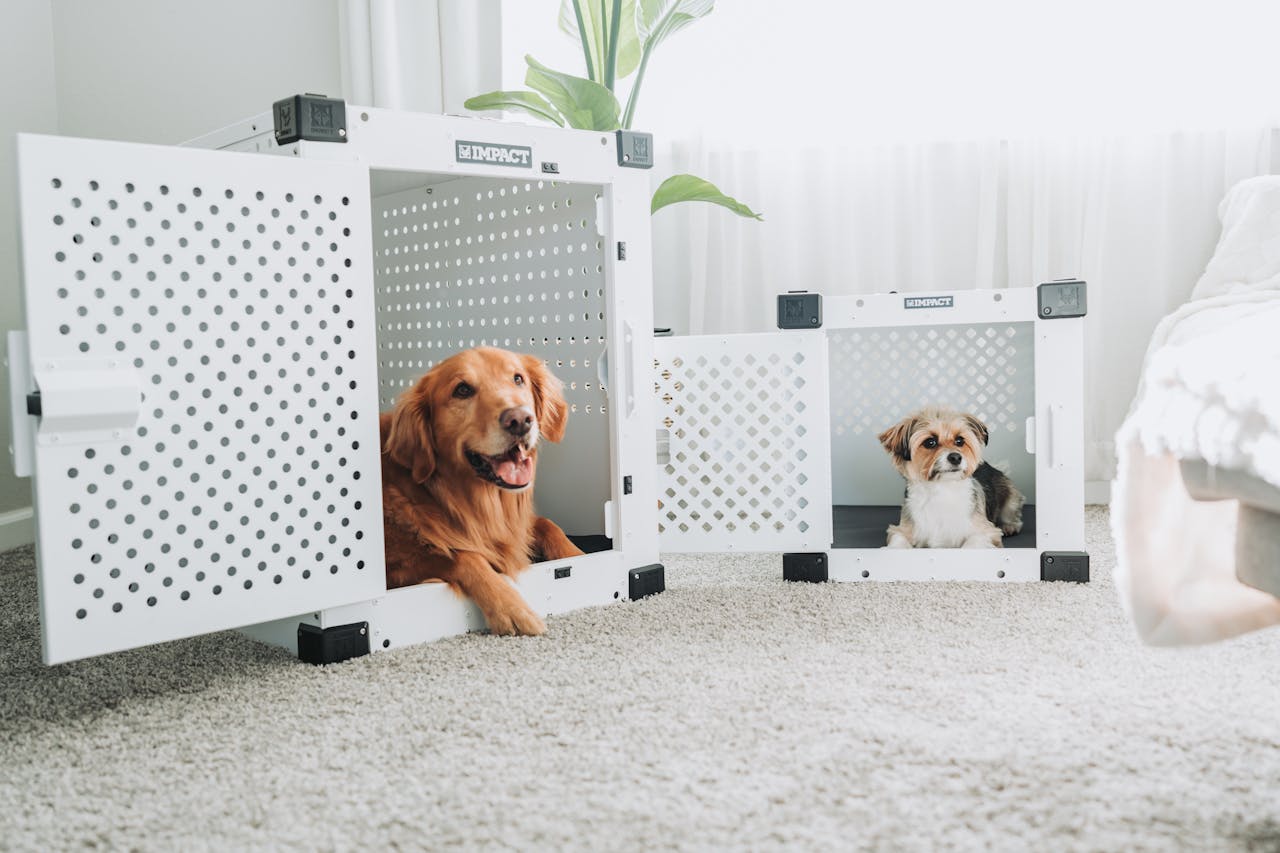Dog Crate Training 101: How to Make the Crate Your Dog’s BFF
Let’s be real. The first time you saw a dog crate, you probably thought, “Uh… am I putting my dog in a cage? Am I a monster now?”
Short answer: Nope. Long answer: Crates are magical, and here’s why. Done right, a crate becomes your dog’s safe haven, nap zone, and chill-out cave. Not a punishment box. Not a jail cell. Think of it like your dog’s studio apartment—no roommates, all vibes.
Ready to ditch the guilt and actually make crate training work? Let’s go.
Why Crate Training Actually Works (Yes, Even for That Wild Puppy)
Here’s the deal: dogs are naturally den animals. In the wild (you know, pre-couch life), they’d seek out cozy, enclosed spots to rest. The crate taps into that instinct. When introduced the right way, your dog will be like, “Oh wow, private suite with treats? Say less.”

Benefits of crate training:
🍲 50 Printable Dog Food Recipes Your Pup Will Love
Skip the fillers and preservatives. Make healthy, homemade meals your dog will actually eat — using everyday ingredients you already trust. Vet-friendly, budget-friendly, and super easy to follow. 🐾
Perfect for picky eaters, senior dogs, and pups with sensitive stomachs. Make mealtime simple and nutritious again.
Get the Recipes Now 🐶- Helps with potty training (no one wants to pee where they sleep, FYI)
- Keeps your dog safe when unsupervised
- Prevents random acts of destruction (RIP, couch cushions)
- Gives your dog a space to decompress, especially during chaos like parties, thunderstorms, or—you know—life
The “Golden Rules” of Crate Training (Don’t Skip These!)
Before we get to the fun part, let’s cover some quick dos and don’ts. Because trust me, you can totally mess this up if you go full dictator mode.
✅ DO:
- Make the crate positive—think cozy vibes, treats, and praise
- Introduce it gradually (don’t just chuck them in and hope for the best)
- Use it consistently but not obsessively
❌ DON’T:
- Use the crate for punishment (unless you want your dog to hate it forever)
- Leave your dog inside for 8+ hours (that’s not “crate training,” that’s solitary confinement)
- Force your dog inside when they’re clearly panicking—this is training, not trauma

Step-by-Step: Crate Training Like a Pro (Or At Least Someone Who Googled It First)
Step 1: Set Up the Crate Like a Vibe
Make it inviting. Add:
- A comfy blanket or dog bed
- A safe chew toy or stuffed Kong
- Maybe a shirt that smells like you (aww)
Keep the door open at first. Let your dog sniff, explore, and step inside on their own. Treats magically appearing inside help, just saying.
Step 2: Associate the Crate with Good Stuff
This is where the magic starts. Toss treats in the crate. Feed meals in there. Make it a place where great things happen. Like your dog’s favorite food truck pulled up inside.
Use a happy voice. “Go to your crate!” should sound like “OMG! You won a prize!” not “You’re grounded.”
Step 3: Close the Door (But Don’t Disappear Into the Void)
Once your dog is comfy hanging out in the crate, try closing the door for short periods while you’re nearby.
Start small:
- 30 seconds
- 1 minute
- 5 minutes
Build up slowly. Read a book. Scroll TikTok. Just stay chill so your dog doesn’t think you’re literally abandoning them forever.
Step 4: Leave the Room (Briefly, Calmly, Like a Ninja)
Okay, now you’re stepping up. Try leaving the room for a couple minutes with your dog in the crate. No dramatic exits. Just a casual “brb.”
Come back, open the crate, and act completely unbothered. Don’t make a big fuss. You want them to think this is totally normal. Because it is.
Step 5: Crate Time While You’re Actually Gone
Once your dog is calm with the crate door closed and you leaving the room, you’re ready to level up: crate time while you’re out of the house.
Start small:
- 10–15 minutes out of the house
- Gradually build up to longer periods
Always give them a chew toy or stuffed Kong to keep them busy (and distracted from the crushing reality that you left without them).
Crate Training Troubleshooting (Because Let’s Be Honest, It’s Not Always Smooth)

“My dog cries like I’ve gone off to war.”
Totally normal in the beginning. Don’t rush back the second they whine or you’ll teach them that noise = freedom. Wait until there’s a pause before letting them out.
“They refuse to go in unless I carry them.”
Back up and make it more rewarding. Go back to treats, games, meals in the crate. Never force it. That’s how you get drama.
“They’re chewing the crate or trying to escape like Houdini.”
That’s a sign of anxiety. You’re probably moving too fast. Slow it down. Make crate time shorter. Add calming chews or an anxiety wrap if needed. In extreme cases? Talk to your vet or a trainer.
How Long Can My Dog Be in the Crate?
There’s no hard rule, but here’s a quick cheat sheet:
Puppies (in hours):
Puppy age in months + 1 = max crate time (during the day).
So a 3-month-old puppy? 4 hours, tops.
Adult dogs:
6–8 hours max, and only if they’re used to it. Preferably less.
Overnight?
Totally fine, as long as they’ve had a bathroom break and some exercise beforehand.
When to Crate (and When Not to)
Good times to use the crate:
- When you’re out running errands (short-term)
- Overnight sleep time
- During meals (if they beg or get underfoot)
- When they need a break from over-stimulation
Bad times to use the crate:
- As punishment (seriously, stop doing that)
- All-day, every day (they’re a dog, not a lamp)
- If they’re showing signs of crate anxiety (fix that first)

FAQ (For the Overthinkers)
Q: Is crate training cruel?
Not when done right. Dogs love structure. A crate gives them that. It’s only cruel if you misuse it—like locking them in for 10 hours a day with zero breaks. Don’t be that person.
Q: What size crate should I get?
Big enough for your dog to stand up, turn around, and lie down comfortably. Not big enough for a second dog, a disco ball, and a couch.
If you’re crate training a puppy, consider a crate with a divider. That way, you can shrink the space when they’re small and expand it as they grow. Fancy, right?
Q: Should I cover the crate?
Maybe. Some dogs love the den vibe with a crate cover or blanket draped over it. Others are like “no thanks.” Try it and see. If it calms them? Go for it.
Final Bark (See What I Did There?)
Crate training isn’t about locking your dog up. It’s about giving them structure, comfort, and a safe place to just be a dog—especially when you can’t watch their every move.
Is it a bit of work in the beginning? Yeah. But is it worth it when your dog puts themselves to bed like a well-adjusted angel while you binge Netflix in peace? Oh heck yes.
Be patient, stay consistent, and remember: dogs aren’t born knowing human rules. You gotta teach them. With snacks. Lots of snacks.
Now go make that crate a five-star doggy resort. 🐾

I’ve spent 10+ years in dog training, digging into what makes dogs (and their humans) tick. At Smart Dog Learning, I share my no-nonsense, fun approach to training so you can enjoy life with a well-behaved, happy pup—no boring lectures, just practical results 😉





